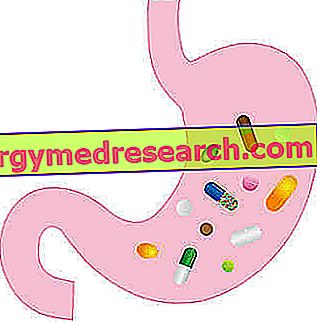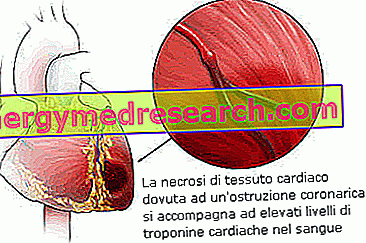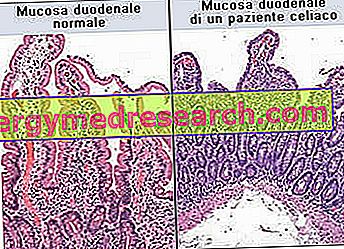Generalities and Therapeutic Indications
Prokinetic drugs are active ingredients used to selectively stimulate the motility of the stomach and intestines.

Moreover, some of the most commonly used prokinetic drugs in therapy are also able to exert an antiemetic action.
Action mechanism
There are different types of prokinetic drugs, which carry out their activity with different mechanisms of action.
However, in principle it can be said that these active ingredients carry out their prokinetic action by interacting with specific receptors located along the gastrointestinal tract.
These receptors are:
- Dopaminergic receptors ; by antagonizing these receptors, prokinetic drugs are able to increase the tone of the intestinal smooth muscle, thus promoting motility.
- Cholinergic receptors (or muscarinic receptors if you prefer); some prokinetic drugs are agonists of this type of receptor, therefore they have sympathomimetic activity. The activation of muscarinic receptors at the gastrointestinal level stimulates the contraction of the smooth muscle of the gastrointestinal tract, increasing its motility and favoring the expulsion of its contents.
- Serotoninergic 5-HT 4 receptors ; some prokinetic drugs act at the level of these receptors, exerting an agonistic action towards them. In this way, they stimulate peristalsis and gastrointestinal emptying.
Furthermore, many prokinetic drugs are also endowed with antiemetic activity, exerted through the antagonization of D2 receptors at the central level in the Chemoreceptor Trigger Zone (or CTZ, an area of the medulla oblongata implicated in the modulation of the activity of the vomiting center) and through the antagonization of 5-HT 3 serotonergic receptors, present both at the central level in the CTZ, and at the level of the gastrointestinal tract.
Types of Prokinetic Drugs
As mentioned, there are different types of prokinetic drugs that can be used to promote and increase gastrointestinal peristalsis.
These drugs will be briefly described below.
bethanechol
Bethanecol (no longer available in Italy) is an active ingredient with a direct parasympathomimetic action. This means that this molecule is able to directly stimulate the cholinergic receptors present at the gastrointestinal level.
In addition to being used in the treatment of gastrointestinal hypotonia, betanecol is also indicated for the treatment of bladder hypotonia.
neostigmine
Neostigmine belongs to the category of prokinetic drugs that have an indirect parasympathomimetic action. In fact, this active principle does not directly stimulate the muscarinic receptors of the gastrointestinal tract, but is an inhibitor of acetylcholinesterases (enzymes responsible for the degradation of acetylcholine).
Therefore, neostigmine exerts its prokinetic action by indirectly increasing cholinergic transmission.
In addition to its use in the pre- and post-operative prophylaxis of gastrointestinal hypotonia, this drug is also widely used for the treatment of myasthenia gravis.
Metoclopramide
Metoclopramide (Plasil®, Geffer®), on the other hand, belongs to the category of prokinetic drugs with antiemetic activity. In fact, this molecule is an agonist of the 5-HT 4 serotonergic receptors present at the gastrointestinal level and, at the same time, it antagonizes the D 2 and 5-HT 3 receptors present in the CTZ and in the gastrointestinal tract.
Metoclopramide exerts its prokinetic activity especially at the gastric level. However, its main therapeutic indications remain the treatment and prophylaxis of nausea and vomiting (including those induced by chemotherapy and antineoplastic radiation therapy, headache and surgery).
Levosulpiride
Levosulpiride (Levopraid®) has a mechanism of action very similar to that of metoclopramide, ie it has an agonist action against 5-HT 4 receptors and an antagonistic action against dopamine D 2 receptors. Therefore, this active ingredient can also exert an antiemetic activity.
Similarly to what happens with the use of metoclopramide, sulpiride exerts its prokinetic action especially at the gastric level. In fact, one of its main therapeutic indications consists in the treatment of the dyspeptic syndrome with delayed gastric emptying.
Domperidone
Domperidone (Peridon®, Domperidone ABC®, Motilium®) is another of those prokinetic drugs also with antiemetic activity.
In this case, however, prokinetic action is exerted through the antagonization of dopaminergic receptors present at the gastrointestinal level. In fact, this antagonization accelerates gastric emptying and increases intestinal tonicity and peristalsis.
Dexpanthenol
Dexpanthenol (Bepanten®) is a drug used in the treatment of intestinal atony. This active principle carries out its activity through a singular action mechanism.
In fact, dexpanthenol is nothing other than the dextrogyrate enantiomer of alcohol obtained from pantothenic acid (also known as vitamin B5). Pantothenic acid is essential for the synthesis of acetyl-coenzyme A (or acetyl-CoA) which, in turn, is essential for the synthesis of acetylcholine.
Once taken, dexpanthenol is converted to pantothenic acid which will then be used to synthesize acetyl-coenzyme A and, consequently, acetylcholine.
Therefore, dexpanthenol - although not properly included in the class of prokinetic drugs - is able to promote intestinal peristalsis through an indirect stimulation of cholinergic transmission.
Side effects
Of course, the type of side effects and the intensity with which they occur can vary depending on the type of active ingredient used and on the sensitivity of each patient to the drug used.
In general terms, it can be stated that the main undesirable effects caused by prokinetic drugs are caused by the action of these same active ingredients also at central level (thanks to their ability to cross the blood-brain barrier) and not only at the peripheral level (in this case, on a gastrointestinal level).
For example, prokinetic drugs such as metoclopramide can cause adverse effects such as restlessness, movement disorders and fatigue. While neostigmine can cause drowsiness, headache, dizziness, convulsions and loss of consciousness.
Domperidone, on the other hand, is not able to cross the blood-brain barrier, therefore, it causes less side effects.
Of course - as with any other active ingredient - the use of prokinetic drugs can also cause hypersensitivity reactions in sensitive individuals.


